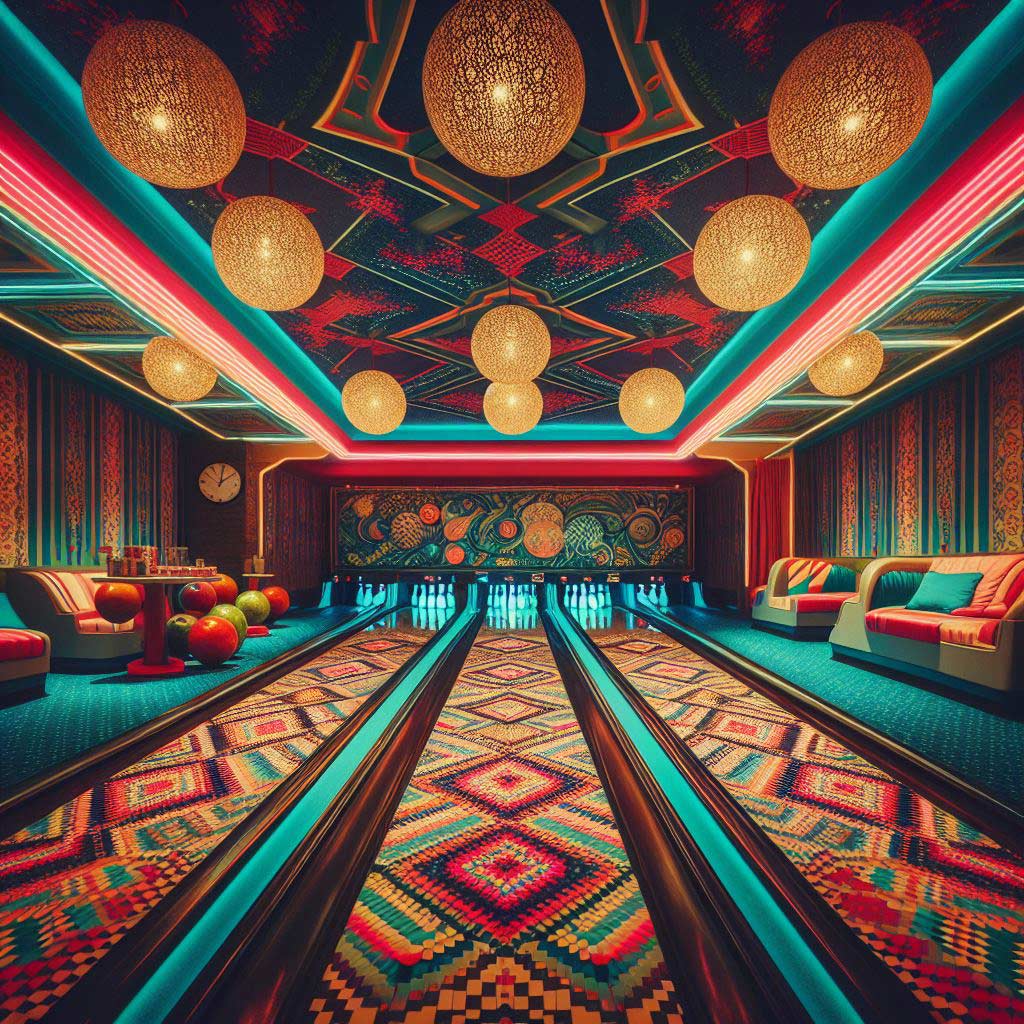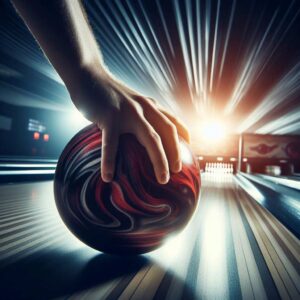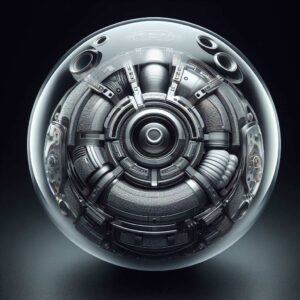Bowling alley carpets play a critical role in the bowling center experience. More than just a decorative floor covering, the right carpet provides traction, durability, and aesthetics for both serious bowlers and weekend family fun.
With the constant impact of bowling balls and thousands of footsteps every week, bowling alley carpets face more abuse than standard office or home carpeting. Choosing a carpet specifically engineered for bowling centers is crucial.
In this comprehensive guide, we’ll cover everything you need to know about selecting the perfect bowling alley carpet, including:
- Key factors to consider when choosing a bowling carpet
- Popular carpet fibers and characteristics
- Visual design options like patterns, logos, and customization
- Professional installation and maintenance best practices
Follow these tips to install durable, attractive bowling lane carpeting that enhances your center’s atmosphere for years to come.
Factors to Consider When Choosing Bowling Alley Carpet
Shopping for carpets tailored to the demands of a bowling center is more complex than picking standard-grade residential or commercial carpets. Before selecting a style, start by determining the performance and durability requirements.
Durability
The most critical characteristic of bowling alley carpets is durability. Lanes have constant action from bowling balls rolling at high speeds down to pins being hit with explosive force. Plus, the carpet withstands thousands of footsteps weekly from bowlers walking up to throw balls.
Look for carpets constructed with resilient, high-denier synthetic fibers like nylon or polyester. Optimal construction includes a dense pile height measuring 0.25 inches or higher and a minimum of 36 stitches per inch. This provides thickness to cushion bowling ball impacts and close stitching to prevent premature wear.
Double backing with synthetic materials like thermoplastic coating or urethane foam further improves stability. Seek out carpets with warranties of at least 10 years to ensure longevity.
Stain Resistance
Food and drinks like pizza, nachos, sodas, and alcoholic beverages often accompany bowling. Lane oil and grease from bowling balls can also transfer onto the carpeting.
Choose a style with inherent stain resistance or coated with a stain-resistant finish. Olefin and polyester fibers have excellent natural stain-fighting properties. Additional chemical coatings applied during manufacturing provide further protection.
Acoustics
The sound of crashing pins and rolling balls reverberates in a bowling center. Look for carpet materials like wool that naturally absorb noise. Latex backing also dampens echo and amplifies acoustics versus hard flooring.
Traction
Proper traction allows bowlers to perform approach steps and release balls smoothly. Excessively grippy carpet impedes sliding motions while slippery carpeting causes slip hazards.
Nylon fibers offer just the right amount of traction for proper bowling approaches and techniques without overgripping. A foam backing also enhances traction control.
Aesthetics
While durability and performance come first, aesthetics still matter for visual appeal. Fortunately, many synthetic carpeting fibers suitable for bowling alleys come in attractive colors and bold prints that hide stains.
Vibrant patterns and colors disguise dirt and oil. Geometric shapes, retro-style designs, and custom logos present ample options to suit your center’s motif.
Cost
Balancing budget constraints with visual appeal and durability is essential. Fortunately, strong synthetic fibers like nylon and polyester prove cost-effective.
Seeking quality over cutting corners is key when investing in heavy-traffic bowling alley carpets. Durability, warranty, and stain resistance provide long-term value that outweighs upfront pricing.
Popular Carpet Fibers for Bowling Alleys
Now that we’ve covered the critical considerations for performance, let’s examine the common carpet fibers ideal for bowling centers.
Nylon
Nylon ranks as the most popular fiber for bowling alley carpets. Its durability withstands heavy foot traffic and force from bowling balls. Nylon offers excellent resilience to bouncing back after impact.
This synthetic fiber resists absorption from spills and stains. Textured nylon styles provide traction without snagging. Nylon comes in a wide variety of colors and patterns to suit any decor. It proves budget-friendly for this level of strength and performance.
Polyester
Polyester carpets share many similarities with nylon. It proves durable, stain-resistant, and colorfast for bowling alleys. Polyester fibers are spun very finely to produce a luxurious, silk-like appearance.
This synthetic material provides softness underfoot while maintaining excellent resistance to grease, oil, and moisture. The color remains vibrant even under bowling alley fluorescent lighting. Polyester lanes cost less than nylon while still performing admirably.
Olefin
Olefin fibers like polypropylene make excellent bowling lane carpeting. The woven, twisted pile construction provides durability with flexibility to bounce back after impact. Olefin resists moisture, mildew and chemicals making cleaning simple.
This synthetic fiber is solution dyed so the color runs all the way through each strand. Even with heavy staining only the top fibers become affected rather than the entire thickness. Olefin remains soft underfoot for bowler comfort.
Wool
Wool carpet offers certain advantages for bowling centers. As a natural fiber, wool provides noise reduction which is beneficial for acoustics. The fibers absorb sound and amplify crashing pins.
The soft fibers feel pleasant underfoot for bowlers. Wool also naturally resists soil and stains. While not as durable as synthetics, wool blends well for bowling when properly maintained.
Key Carpet Characteristics to Look For
Beyond the actual fiber content, several other carpet characteristics affect performance. Consider these specifications when reviewing bowling carpeting.
Pile Height/Thickness
The pile refers to the vertical fibers that make up the visible carpet surface. Longer pile heights prove more durable and plush. Opt for a pile minimum of 0.25 inches high. Anything lower than 0.2 inches lacks sufficient thickness for bowling alleys.
Density/Stitches Per Inch
Density measures how many stitches per inch hold the carpet fibers in place. High-density carpets with stitches per inch exceeding 36 offer greater durability and stability. Low densities allow fibers to detach more easily from repeated bowling ball rolling.
Backing Material
Carpet backing provides dimensional stability and adhesion to the underlayment. Common options include thermoplastic coatings, latex, and polyurethane cushions.
Seeking a moisture-resistant backing prevents floor damage from spills. Latex backings contribute acoustic properties. Double backing layers increase strength and durability.
Warranty
Given the extreme demands bowling places on carpeting, opt for the longest warranty available. Top-tier carpets offer 10-year or lifetime warranties against wear and manufacturer defects. This protects against early replacement costs.
Visual Considerations and Pattern Options
While performance and durability take top priority, aesthetics still matter for visual appeal. Fortunately, today’s synthetic carpeting offers endless possibilities for colors, textures, and designs.
Solid Colors vs. Bold Patterns
For a classic look, solid color carpeting in bold jewel tones exudes modern style. Vivid colors like royal blue, bright red, and emerald green hide dirt and stains.
For a more eye-catching motif, opt for bold geometric patterns and shapes. Diagonal stripes, zig-zag motifs, and large floral prints all grab attention. Strong patterns help disguise foot traffic and soiling over time.
Retro/Vintage Designs
Vintage bowling alley themes have seen a major resurgence. Mid-century modern atomic prints and retro flowers play into the nostalgic trend. Choose lighter pastel palettes for a retro vibe.
Geometric Shapes and Textures
From Diamonds and concentric squares to interesting motifs like honeycomb designs, geometric themes provide visual interest. Subtle textural patterns like loops and swirls offer dimension without overwhelming.
Custom Logo or Branding
Customizing carpets with a proprietary business logo or branding sets a facility apart. Center crests, vintage wall signs, and other motifs translate well into carpeting. For a truly distinctive look, design custom carpeting unique to your bowling center.
Carpet Installation Tips
Proper installation directly impacts carpet longevity in high-traffic bowling alleys. Here are best practices for seam placement, stretching, and adhesive selection during the installation process.
Seam Placement
Seams are necessary for wide lane carpeting but should be minimized in high foot traffic areas. Position seams a minimum of 6 inches away from foul lines and throwing approach areas.
Use the least number of seams possible down the lane length, secreting them away in lower impact zones. Seams inevitably weaken and unravel before surrounding carpet areas.
Proper Stretching and Trimming
Wrinkling or buckling results from improper stretching during installation. The carpet needs firmly stretched to lay flat wall-to-wall.
Along walls, trim carpet seam allowances close to the baseboard. Excess material gets caught underfoot increasing risks of loose corners or snags.
Adhesive Selection
Adhesive selection prevents the carpet from eventually loosening or detaching. Opt for a premium moisture-resistant adhesive to prevent liquid damage. For acoustics, latex-based glues perform better than synthetic adhesives.
Maintenance Tips
With proper care and cleaning, bowling alley carpeting maintains function and aesthetics longer. Follow these maintenance best practices.
Regular Vacuuming
Daily vacuuming keeps the carpet free of dirt, debris, grease, and oil that gradually break down fibers. Use a commercial-grade vacuum to remove residue that consumer models cannot. Clean all high-traffic walkways and approach areas thoroughly.
Spot Cleaning
Immediately treat any food, beverage, or oil spills with an appropriate spot cleaner. For grease, use a solvent spotter. With colored drinks, blot up moisture and use a cleaner for that specific stain type. The faster you can treat spots, the less likely they are to leave permanent remnants.
Professional Deep Cleaning
Even with diligent vacuuming, dirt, and oil still gradually accumulate deep in the carpet fibers. Professionally deep clean the carpeting every 6-12 months using hot water extraction. This blasts away deep-down debris across all areas.
Carpet Rotation
Occasionally rotating high-traffic runway sections with lesser-used areas helps distribute wear more evenly. Installers can strategically reposition lane sections to spread use over time.
Conclusion
Specifying the optimal bowling alley carpet involves more considerations than basic office or home flooring. Prioritizing durability, stain resistance, traction, and acoustics ensures carpeting performs properly during bowling. Synthetic fibers prove longer lasting than natural options.
Aesthetic needs still matter through colors, exciting patterns, and custom branding. With the right carpeting choice, installation, and ongoing maintenance, bowling centers benefit from attractive, high-performing lanes that enhance the customer experience. Carpeting tailored specifically to stand up to bowling alley demands provides long-lasting functionality, safety, and fun.
Frequently Asked Questions
Why are bowling alleys in basements?
Bowling alleys are often located in basements because the underground location helps dampen the noise from crashing pins and rolling balls. The solid concrete walls and floors provide sturdiness to support the specialized frameworks used for bowling lanes. Basements allow for large open spaces uninterrupted by supporting columns.
Who makes casino carpet?
Some top manufacturers specializing in carpets for casinos include Collins and Aikman Floorcoverings, Spartan Mills, and Summit International Flooring. They make durable, boldly patterned carpets using heavy-duty nylon or polyester yarns. Custom design options showcase casino themes and branding.
How are bowling alley floors so strong?
Bowling lane floors consist of hard maple wood bases overlaid with synthetic laminates. This creates a firm but slightly flexible surface specifically engineered for bowling balls. Laminate layers vary from paper-like fiberboard to melamine and urethane for durability. Joint connections allow controlled flexing on impact.
What kind of floors do bowling alleys use?
Most modern bowling alleys use synthetic laminate lane surfaces. Hardwood maple provides a sturdy base. Layers like particle board for cushioning and melamine for hardness get applied atop the wood and covered in urethane sealant. The carpet extends from the lane approach out to the bowler’s seating.
What is a magic carpet?
A magic carpet refers to the automated carpet-like material that runs along the length of a bowling lane underneath the pinsetter machine. It uses a continuous loop to clear fallen pins and reset equipment after each bowl.
Who makes the most expensive carpet?
Some of the most expensive carpets come from luxury designer brands like Christian Dior and Axminster Carpets. Made from premium natural fibers like silk and wool, intricately handcrafted rugs can sell for over $100,000.
Why do casinos have loud carpet?
Casinos often choose carpeting with busy, bright patterns that make a noticeable sound when walked on. This disguises noises from dropped chips, coins, winnings, losses, and other gambling-related sounds. The loud carpets help maintain an aura of privacy at gaming tables.





